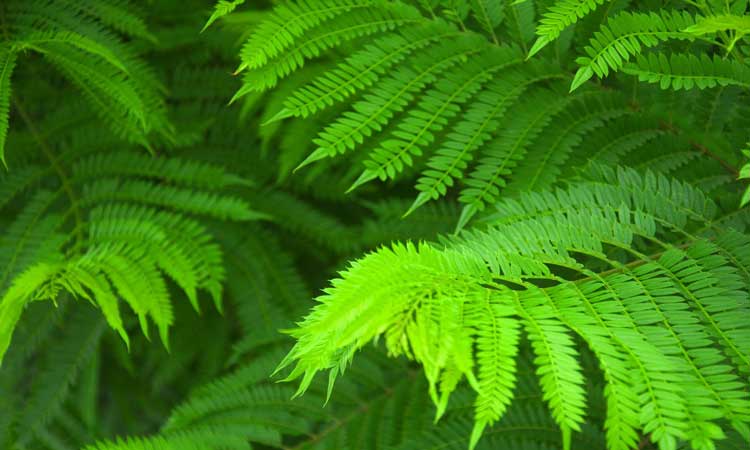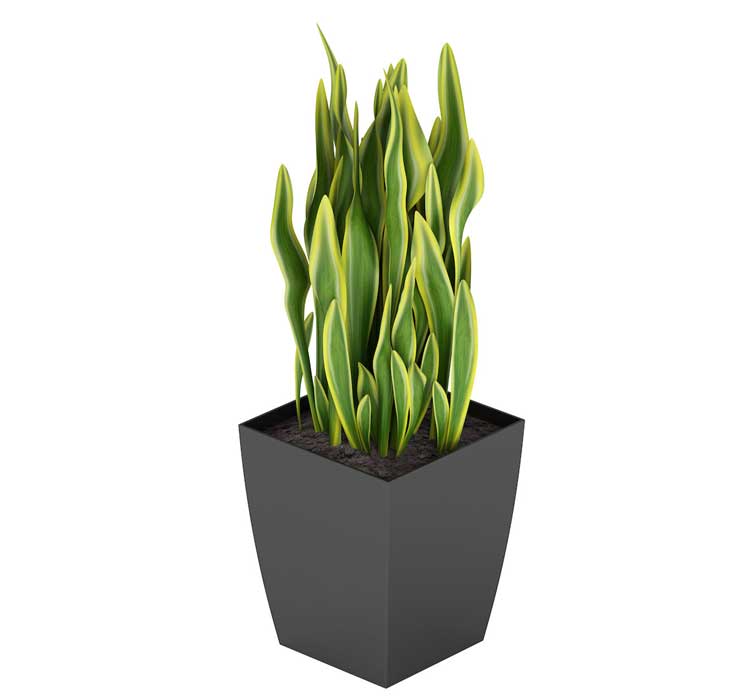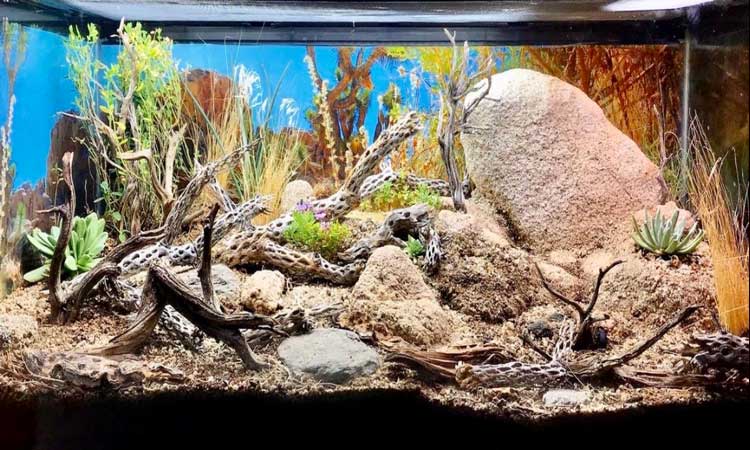Despite the fact that some people like to keep their snakes in pseudo-sterile and utilitarian habitats, others enjoy decorating their vivariums with live plants and arranging natural-looking habitats.
This can complicate your snake’s care regimen, but it also offers a variety of advantages.
Real plants for snake terrarium are also cool to look at and will make the habitat more natural and suitable for your pet snake.
It’s not a good idea to go to the local garden center and randomly buy plants to put in your snake’s habitat.
In most cases, that wouldn’t work, as many plants would die, and if you made an injudicious choice, you might end up with a snake injured. We are here to help you at all times.
Pet snake owners always wonder what plants are safe for a snake terrarium or can I put a snake plant in a terrarium. In the following article, you will find information that will help you to know about the 12 best safe and live plants for snake terrariums and properly acclimate your snake’s habitat with plants, including information on how to plant them, a few safety concerns, and, of course, how to choose the right species.
Adding Real Plants to Snake Enclosures
There is little difference between adding plants to snake enclosures and adding them to lizard or tortoise enclosures.
Due to the fact that plants aren’t eaten by snakes, adding plants to a snake’s habitat involves less risk and is even easier.
In order to achieve the best results, you will still want to go about the project in a responsible manner and consider your pet’s health and safety.
Here are a few things you need to do:
- The plants you choose for your snake’s enclosure should thrive in its climate. The majority of plants exist in a specific type of habitat, like snakes. While plants tend to be more flexible in this regard than snakes, you should choose plants that can thrive in the environment in which your pet lives. You should choose plants that will grow effectively in damp and dimly lit environments for your green tree python enclosure, as well as drought-resistant succulents for your sand boa enclosure.
- Make a decision about what installation strategy works best for you. You may want to consider keeping them in small pots or containers instead of placing them directly into your enclosure’s substrate. The plants can easily be moved or replaced as necessary, and overall results are often better. The pots can easily be camouflaged or hidden using cork bark, branches, rocks, and similar materials.
- Before adding plants to the habitat, make sure they are properly prepared. Plants are unknown to be sprayed with pesticides before you bring them home, so making sure the plants are thoroughly rinsed with cool water before adding them to your habitat is a good idea. Also, some keepers like to remove the potting soil in which the plants are growing and replace it with new soil, as an added safety measure.
- Layout the plant so that damage is minimized and maintenance is made easier. Plants you place in your snake’s terrarium will not damage his habitat, but his activity may cause some plants to be damaged. Because of this, you should place the plants in places difficult for your snake to crawl over. Additionally, be sure to install the plants in an area where they are easy to reach when they need to be watered.
- Prune your plants regularly. Plants can take over the habitat of your snake if you are successful in installing them in the enclosure. If this happens, you may end up with a snake that has less room for movement and an enclosure that looks cluttered. Pruning your plants with garden scissors regularly is an easy way to resolve this problem.
12 Best Plants for Snake Terrarium
In a snake habitat, you can likely choose from thousands of plant species, but beginners are often unsure of where to start or how to narrow the choices down. There are a lot of options, but I think the 12 species listed below are among the very best (along with some of their close relatives).
1. Nephrolepis exaltata (Boston fern)

Popular among houseplant enthusiasts, this plant can also be found in many snake habitats because it is commonly called the Boston fern. In dim lighting, these ferns can survive, but without adequate sunlight, they will rarely grow well. The plants can also be planted in your pet’s substrate, where they can provide ample hiding spots. You will often find these plants in hanging baskets, but they can also be planted on the substrate.
2. Platycerium bifurcatum (Elkhorn fern)
Platycerium bifurcatum, more commonly known as the elkhorn fern, derives its common name from its superficial resemblance to antlers. You can either plant it directly in a substrate or attach it to elevated branches for epiphytic growth depending on the species.
Despite being poorly suited to arid snake habitats, it does well in rainforest-style vivaria. Easily found at most nurseries and home improvement stores, the elkhorn fern is a popular houseplant.
3. Opuntia spp.
Snakes that live in arid climates prefer prickly pear cacti. Keeping snakes with spines can result in injuries to those in the care and the snakes themselves, but most snakes can avoid getting injured by sharp objects in their environment.
If you want these cacti to survive, either provide super bright habitat lighting, or you can simply remove them periodically, let them rest outside, then reinstall them in the enclosure after they have recovered.
4. Senecio citriformis (String-of-pearls)
Senecio citriformis, the string-of-pearls plant, has bulbous blue-green leaves with a string-like appearance. Plants like these require very bright lighting in desert-style vivaria; damp or dim lighting is not conducive to their growth. Cuttings taken from this particular plant will often root easily, making it possible to start with a single plant and subsequently have many more on hand.
5. Epipremnum aureum (Golden pothos)
If you want to use snake enclosures, you cannot go wrong with golden pothos. Plants such as these thrive in humid, dimly lit conditions (they grow hydroponically), making them ideal for a tropical, rainforest-style terrarium. The golden pothos has several different varieties, some with variegated leaves and some with more uniform coloration. Installing pothos in the snake terrarium will add more value.
6. Aechmea recurvata (Urn plants)
Urn plants, as they are often referred to, are common in home improvement stores and nurseries, and will thrive in humid environments. There is a need to take care when planting and working around these plants because they produce spiky leaf tips. You can choose from several types of urn plants, so be sure to research this plant thoroughly and choose the one most appropriate for your enclosure.
7. Tradescantia zebrina (Wandering Jew)
In colloquial language, this pretty plant has the name “wandering Jew” because it grows along the ground, making it an ideal habitat for arboreal snakes. A damp substrate will not allow it to thrive. Make sure it is not overwatered. However, this plant does well in most terrariums, but it must be pruned regularly to protect other plants from being overtaken.
8. Philodendron Hederaceum
Reptile enthusiasts should also consider the Philodendron hederaceum as a houseplant. Because many Philodendron species are toxic, it is an excellent choice for humid enclosures. A snake enclosure usually works well for this species since it is hardy and does not need particularly bright light to survive.
9. Echeveria laui
The gray to pink leaves of the Echeveria laui succulent is very appealing to keepers of desert-dwelling snakes like sand boas. Snake cages don’t have to worry about this plant having spines, unlike many other plants that flourish in arid climates. There are a number of cultivars of this plant species that are available on the market, and they differ not only in appearance but also in hardiness and the amount of water they need to grow. To maximize your chances of success, you should carefully select your cultivar.
10. Aloe vera
Aloe vera is known for its soothing extracts, but its soothing effects also make it an excellent plant for arid habitats such as snake habitats. As there are many Aloe vera varieties available, including some with spikes, it is vital to choose one that will work best for your situation. In order to accommodate aloe vera plants, enclosures with substantial height would be best for the plant’s vertical growth.
11. Sansevieria trifasciata (Mother-in-law’s tongue)

In reptile enclosures, Sansevieria trifasciata, otherwise known as mother-in-law’s tongue, is a popular houseplant. Due to its hardiness, drought tolerance, and reliance on bright lights, it is best suited to desert-style terrariums. However, like a few others, we’ve discussed so far, it grows vertically, so an enclosure tall enough to adequately house one of these fascinating plants is needed.
12. Haworthia nigra
This South African succulent plant with bumpy green leaves makes an excellent choice for arid snake enclosures. Despite its bright light requirement, this species is much easier to grow than most other succulents. While you may have a difficult time finding a specimen of this plant, you should be able to locate one with a bit of effort.
The Subject of Safety
You shouldn’t worry about your snake becoming ill after consuming a toxic plant in his enclosure, but injuries are possible. As an example, some plants are covered in sharp spines or thorns. There is a possibility that your snake may suffer from serious puncture wounds.
In addition, you will want to choose plants carefully to avoid any problems. In some plant species, the sap can cause skin irritation, so if you have sensitive skin, you should avoid such plants.
Tips for Plant Installation
You should now be ready to purchase some plants and start adding them to your habitat now that you have a few ideas for species selection. Take a look at the following tips and tricks before you proceed, as they may make things easier and produce better results.
- Plants with different growth habits are best. When you look at a natural habitat, you’ll see that it’s home to a wide variety of plant species that all grow differently. It is possible to grow tall trees and cling to the ground with ground cover plants. There are also bushes and vines that grow. To begin with, try as much as you can to pick a collection of plants with several different growth habits.
- Plants should be rotated regularly. Choosing plants that require a lot of light exposure will likely result in them starting to wilt and eventually dying. This issue can be addressed by rotating plants on a regular basis. Then, swap the plants out with others after a month or so in your snake’s habitat. If you do not have a snake habitat, make sure the plants that are not in the enclosure are where they need to be, so that they can recover and regain their vigor before going back into the enclosure.
- Learn about the cultivars and varieties of the species you want to grow. Cultivars or varieties are numerous forms of popular plant species. It is often true that these varieties differ in aesthetic ways. However, they can also differ in lighting requirements, susceptibility to fungi and bacteria, and growth habits. Research is necessary before you make your choice.
- If necessary, increase the quality of lighting in your snake’s enclosure. The relatively dim lighting in your snake’s cage might not be conducive to the development of your plants, so consider upgrading the lights. Full-spectrum bulbs will generally improve your plant’s growth and vigor, and snakes rarely seem to be bothered by them. If you want your snake to hide, just make sure he has lots of dark places to do so.
Conclusion
You don’t need to worry about plants being a necessity in snake enclosures. Snakes generally live long, healthy, happy lives even in spartan, no-frills enclosures completely devoid of plants.
Consider giving your pet snake some live plants if you want to make his enclosure resemble a small slice of his natural habitat. Although there is a potential downside of doing so, there is also a significant potential upside. Be deliberate when selecting the plants you install and use the tips provided above.
By doing these things, you will likely be able to successfully add live plants to your snake’s enclosure.

